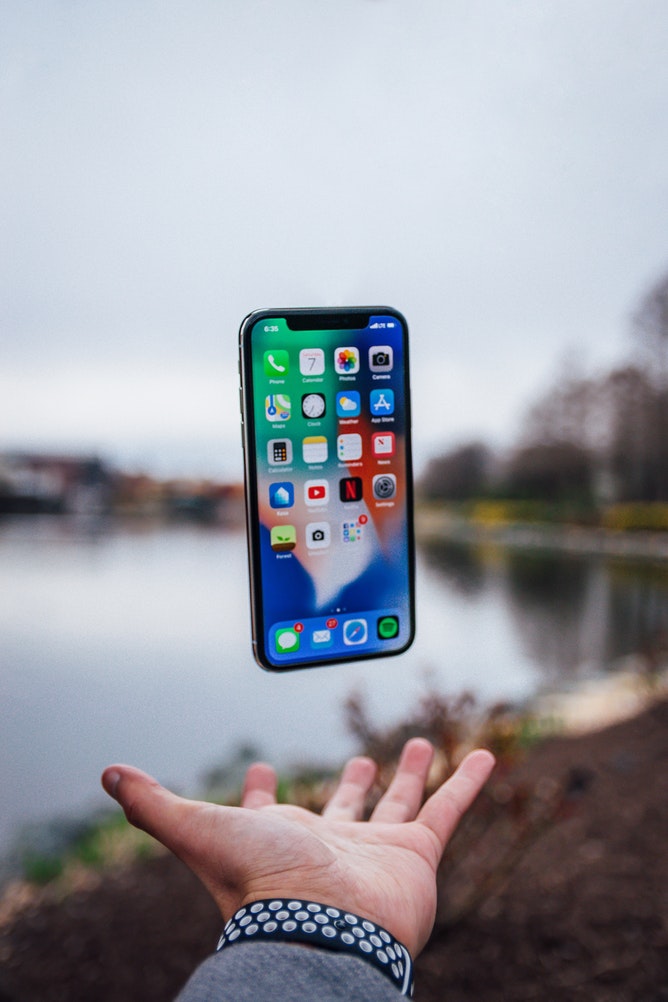
5 Ways To Be More Mindful With Technology
While technology has brought us many positive things like important information and a new way to connect with others, it has also brought about many negatives. We discussed earlier this month how the rise of technology has led to an increase in self-esteem issues due to the constant comparison to others. Part of this has to do with the endless scrolling we’re now accustomed to (and we might not even be aware of it!)
Of course any online company is going to want you to spend as much time online. This is how they make money. Whether you’re making a purchase or engaging on social media, this is what websites like Amazon and Instagram want you to do. They hire specialists like psychologists and neuroscientists to make sure you spend a lot of time on their websites. Basically, the reason you’re endlessly scrolling on Instagram isn’t necessarily your fault. It’s a strategic algorithm that keeps you coming back for more. Thankfully, there is something you can do about it.
We are constantly on our phones but did we ever stop to think why? Going beyond these strategic algorithms is just plain old brain science. For example, classical conditioning. If you’ve ever taken a psychology class, this may sound familiar. Russian physiologist Ivan Pavlov was the first to describe classical conditioning. In his research, he was able to train dogs to associate the sound of a bell with the presentation of food. Therefore the dogs would salivate when they heard the bell. Now how does this relate to something like a smartphone? Think about how you feel when you hear the sound of a ring tone, text message or other alert (especially if it’s the same sound as yours). Is it excitement? Panic? Curiosity? Regardless of the feeling, you’ve been trained to associate that sound with a feeling. Classical conditioning at its finest.
Another example of psychology used in technology would be “supernormal stimuli.” This is an exaggerated version of something that you have a natural response to. And your response to this exaggerated version is much stronger. Social media is a great way to relate “supernormal stimuli” and technology. As humans, we seek strong relationships and thrive off of connecting with others. It’s in our nature. So when we have the “supernormal stimuli” of social media that keeps us constantly connected to others, we seemingly can’t get enough. Even if those people we’re connected to, we don’t even know…it makes us feel like we do and only expands our network.
So now that you know why you’re constantly on your phone, what can you actually do about it? Of course it’s not a bad thing to get work done on your computer, stay connected with those far away and possibly learn some new things thanks to technology. But when it doesn’t seem like you can go five minutes without your phone, this is when you might want to consider making some changes. When you’re addicted to technology this can lead to sleep issues, a decrease in physical activity as well as limited in-person interaction. It’s important to find a healthy balance and a purposeful use of technology so that we aren’t servants to our screens.
Here’s 5 changes you can make to be more mindful with technology.

Familiarize yourself with “do not disturb”
This is a great feature on a smartphone to use while sleeping (so you’re not interrupted by any notifications). However, it’s something to consider experimenting with during the day as well. If you find yourself easily distracted by your phone when you need to get work done, try turning it on “do not disturb.” That way you’ll still receive your messages but you won’t be alerted until you turn off “do not disturb.” For those who have an especially hard time disconnecting, take small steps. Make it a goal for one hour each day (during the day) to put your phone on “do not disturb” and maybe even put it in another room. After a while you can gradually increase to 2, 3, 4 and even 5 hours.
Utilize the “Screen Time” or “Digital Wellbeing” features
As we’ve gotten more attune to the fact that we probably shouldn’t be on our phones 24/7, the smartphone manufacturers are finally helping us out. With features like “Screen Time” (for iPhone) and “Digital Wellbeing” (for Android), you now have more control over how much time you spend on your phone. You can get weekly reports and set time limits for apps, as well as set up other restrictions. Be honest with yourself though when setting these limits. Know where you’re at now and where you’d like to be. As always, you don’t have to cut it off completely. Small steps are encouraged!
Turn off notifications
Our phones have it automatically set where most notifications are turned on (news, social media, others apps, etc). The less often our phones chime or buzz, the less likely we are to pick it up. Although we might receive a notification from CNN, you never know where you’ll end up scrolling after responding to just that one alert. We realize that some things are more important than others when it comes to apps and notifications, so turn off the ones that aren’t important. Leave a few that you feel are absolutely necessary.
Put away your phone when you’re not using it
Taking “do not disturb” to the next level, try to put your phone away when you’re not using it. Out of sight out of mind truly applies here. If it’s not right in front of you, you’re less likely to pick it up and start endlessly scrolling. This is especially important when you’re with other people. We’ve become so accustomed to watching people constantly check their phones, even when in the presence of others. But what’s the point of being around people if you’re not even connecting with each other? Putting away your phone isn’t just good for you but a considerate thing to do for others.
Disconnect while in transit
Whether you’re walking or taking the train (and especially if you’re driving!) put away your phone and notice your surroundings. This is an important part of mindfulness – to be present and aware. Those two things are nearly impossible when constantly looking at your phone. While you’re more present and aware, you never know what you’ll find. Perhaps you’ll stumble upon a new restaurant or run into an old friend. We miss out on the little things when our head is down at our screens. So look up and out and simply notice.
Although there are many ways technology has made us more productive and connected, it has also made us quite unproductive and disconnected at the same time. The first step to becoming more mindful with technology is being aware that maybe you are spending too much time on your phone. Once you realize that, you can take the necessary steps to put the phone down and stop and smell the roses.
If you continue to struggle with your attachment to technology, consider speaking with a professional. Schedule an appointment with one of our therapists today.
If you are seeking counseling in New York City, contact us today to learn more about our services!
Request a Consultation
Fill out the form below to have one of our therapists reach out to discuss consultation services in New York City.
MindWell Psychology Contact Information
Phone: 646.809.5440
Email: intake@mindwellnyc.com





